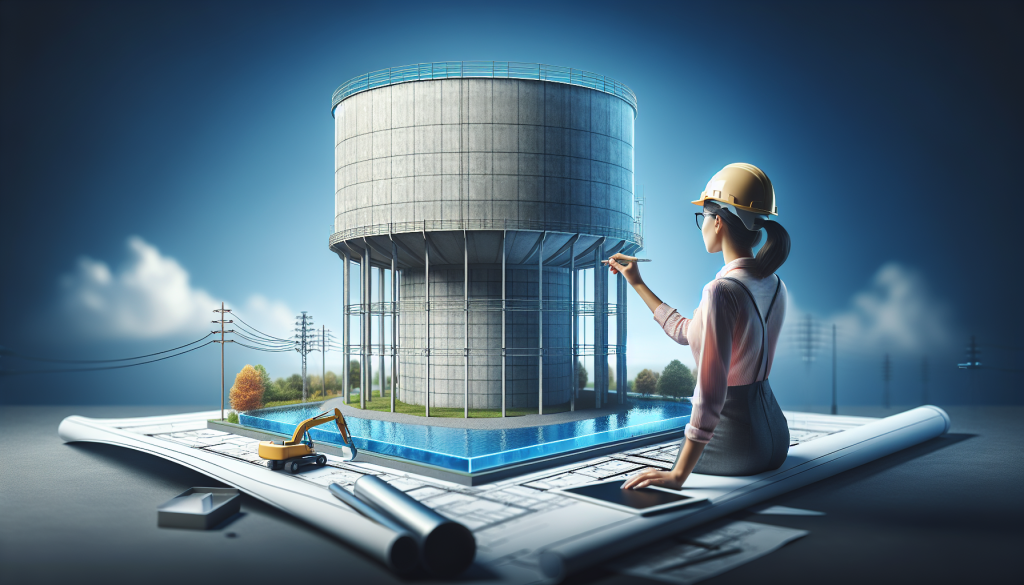
As India’s tech campuses expand rapidly to accommodate a burgeoning workforce, sustainable water management becomes a priority. Effective water storage systems are critical in addressing water shortages, fluctuating demand, and environmental sustainability. Here’s a guide to designing water storage systems tailored to the unique needs of tech campuses in India.
1. Understanding Water Demand
The first step in designing a water storage system is to assess water demand. Consider factors like:
1. The campus population, including employees, visitors, and residents (if accommodations are provided).
2. Operational needs such as cooling systems for data centers, irrigation for green spaces, and sanitation facilities.
3. Emergency reserves for fire safety and unplanned outages.
Solution: Conduct a detailed water audit to estimate peak and average daily consumption.
2. Assessing Water Sources
Tech campuses typically rely on multiple water sources:
1. Municipal water supply.
2. Groundwater extraction via borewells.
3. Rainwater harvesting systems.
4. Recycled water from wastewater treatment plants.
Design Tip: Develop a hybrid system that integrates all available water sources to ensure reliability and efficiency.
3. Selecting Storage Solutions
Choosing the right type of storage tank depends on the volume required, available space, and specific usage.
1. Overhead Tanks: Perfect for facilitating water flow via gravity, these systems offer an economical solution while minimizing energy use.
2. Underground Reservoirs: Useful for storing large volumes of water, especially for rainwater harvesting or emergency reserves.
3. Modular Tanks: Provide flexibility and scalability for campuses expecting future growth.
Pro Tip: Use durable, corrosion-resistant materials like RCC (reinforced cement concrete) or HDPE (high-density polyethylene) for long-term performance.
4. Incorporating Rainwater Harvesting
Rainwater harvesting is essential for water sustainability in India. Design systems to collect, filter, and store rainwater from rooftops, parking areas, and open spaces.
1. Key Components: Gutters, first flush devices, filtration units, and storage tanks.
2. Design Consideration: Ensure the tank has overflow mechanisms and connections to recharge groundwater.
5. Integrating Smart Technologies
Intelligent water management systems improve resource efficiency and minimize waste. Consider the following technologies:
1. IoT Sensors: Monitor water levels, quality, and usage in real-time.
2. Automated Valves: Control flow and distribution based on demand.
3. Data Analytics: Predict usage patterns and optimize water storage capacity.
Innovation: Use AI-driven systems to detect leaks and identify inefficiencies.
6. Ensuring Water Quality
Maintaining water quality is as important as availability. Use these strategies:
1. Install filtration systems to remove impurities.
2. Regularly clean and maintain tanks to prevent contamination.
3. Incorporate UV treatment or chlorination for potable water.
7. Planning for Sustainability
Design water storage systems with sustainability in mind:
1. Use renewable energy sources, such as solar pumps, to reduce dependency on electricity.
2. Treat and recycle wastewater for non-potable uses like landscaping and cooling.
3. Encourage behavioral changes among campus users to conserve water.
8. Complying with Regulations
Ensure your water storage design adheres to local and national water management laws. For instance:
1. Follow the Central Ground Water Authority (CGWA) guidelines for groundwater use.
2. Meet the Bureau of Indian Standards (BIS) specifications for water storage tanks.
9. Preparing for Climate Challenges
India faces erratic monsoon patterns and prolonged dry spells. Design systems with resilience in mind:
1. Increase storage capacity to buffer against periods of low rainfall.
2. Incorporate flood-proofing measures for underground tanks.
Conclusion
Designing water storage systems for tech campuses in India is a blend of engineering precision, sustainability principles, and innovative technologies. By integrating rainwater harvesting, leveraging smart solutions, and planning for future demand, campuses can ensure water security and contribute to environmental stewardship. Sustainable water management is not just an operational necessity but a step toward a greener future.


